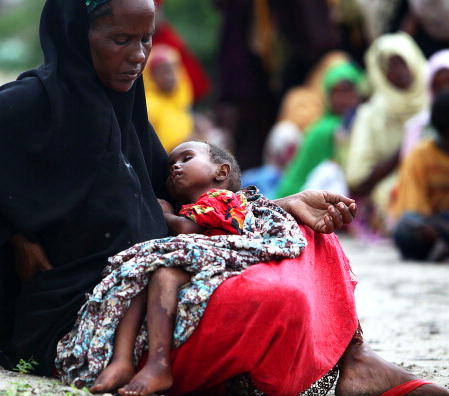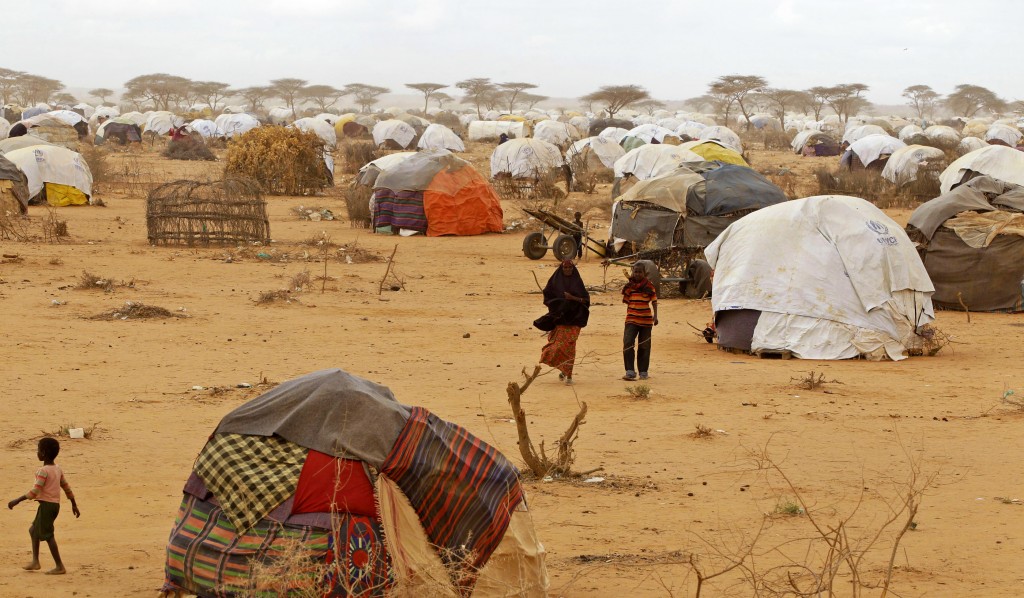Dadaab refugee camp in Kenya now bears the grim title of the largest refugee camp on planet earth. Overcapacity and under-resourced, Dadaab is a virtual city of ramshackle tents as far as the eye can see. The rusty glow of dust covers the landscape in a haze that resembles the barrenness of a hellish wasteland.
Built to hold no more than 90,000 refugees at a time, Dadaab has been stretched to the limits, housing multitudes of desperate men, women, and children fleeing from nearby Somalia. The population is nearing half a million, with 1,000 new refugees being absorbed every day into the weakening pulse of this tired and tattered city.
Caravans of families move slowly on the way to Dadaab, often walking for weeks in order to reach the only oasis left in the desert. Reports say that 50 percent of children entering Dadaab are malnourished, while as a whole, 30,000 under the age of 5 have perished in the last 90 days alone. For the average Somali woman who has seven or more children, this could mean losing three or four of her family at a time—the unthinkable for any mother or father. One mother named Halima Omar told the U.N.:
“There is nothing in the world worse than watching your own child die in front of your eyes because you cannot feed him . . . I am losing hope.”
The people in Dadaab are in dire need of vaccines, water, and food. Reports say there is not enough water to begin to meet the minimum requirements for survival. With 600,000 children on the brink of starvation, Eastern Africa has recently been named “the most desperate place on earth.”
This crisis demands not only a swift response from international governments and aid agencies, it demands our every effort; it demands our hearts. We must be bold and we must be relentless. For any follower of Christ, indifference no longer remains an option, yet it continues to be the most pressing opponent of our faith.
Since the onset of the crisis, twenty 40-foot containers of corn, high-protein soup mix, and other food supplies have been secured by World Help, containing enough provisions to accommodate 5 million meals.
We have already raised the funds to send 2 containers of aid to Kenya, but we need your help to send 18 more!
In only a few short days, I will be traveling to Kenya and Dadaab specifically to assess the needs of the refugees there and to collaborate with aid strategists and government officials on the best way to send shipments of humanitarian aid into the camp.

The cost of shipping each container to the Horn of Africa is $6,000, a relatively small amount to pay for such a tremendous impact, especially during one of the most urgent human catastrophes of the twenty-first century. Will you consider underwriting the cost of one of these containers through a charitable gift as a church, family, or business?
In my 20 years of ministry through World Help, this disaster ranks among the most severe of crises that I have ever seen. Perhaps what is most striking is how little attention the story is receiving from the news. As Anderson Cooper recently commented, “600,000 kids on the brink of starvation—that should be a headline around the world.”
I covet your prayers for the millions of people hanging on for their lives. Please join me in responding to this crisis as you would respond to your own family in time of need.
You may give by calling toll free 800-541-6691 to place a gift on your credit card, or click here to give online. You can also donate $10 by texting WORLDHELP to 85944.
We also need your help in spreading the word. We have made it easy for you to share this great need and fundraise along with us by going to https://worldhelp.net/gift/global-hunger-fund/.
Watch for more reports of my time in Kenya next week.
![]() For other blog posts on the continuing crisis in Somalia, follow our postings at http://whelp.us/HornofAfrica.
For other blog posts on the continuing crisis in Somalia, follow our postings at http://whelp.us/HornofAfrica.





